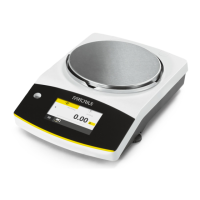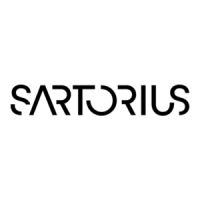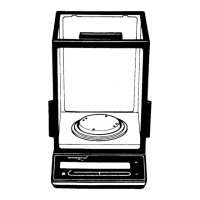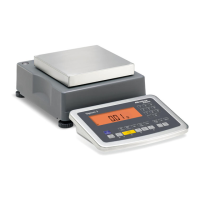Do you have a question about the Sartorius Secura 224-1S and is the answer not in the manual?
Explains warning and danger symbols used in the manual.
Lists and explains symbols used throughout the manual.
Provides contact information for application advice and technical support.
General guidelines and important safety information for balance operation.
Specific instructions and warnings related to the installation of the balance.
Defines the intended purpose and application of the balance.
Instructions for unpacking the balance and listing supplied components.
Step-by-step guide for installing the balance and its parts.
Guidelines for selecting an optimal and safe location for the balance.
Instructions and precautions for safely moving the balance.
Details on connecting the AC adapter and power plug.
Information on the required warm-up time for accurate results.
How to turn the balance on, off, and put it into standby mode.
Guide to the initial setup wizard for language and date/time.
Instructions for using the port for below-balance weighing.
Information on securing the balance using an anti-theft device.
How to turn the balance on, off, and put it into standby mode.
Ensures the balance is level for precise weighing results.
Instructions for leveling the Secura® balance using its electronic indicator.
Instructions for leveling Quintix®/Practum® balances with a conventional indicator.
Describes the operational possibilities and features of the balance.
Overview of the balance's display elements and their functions.
Explanation of how to navigate and use the balance's menu system.
How to input numerical values using the balance's keypad.
How to input text and characters on Secura® models.
How to select and launch different weighing applications from the menu.
A list and brief description of available weighing applications.
How to access and modify system settings in the setup menu.
Information on all basic balance settings which can be defined in the menu.
How to set and change the balance's display language.
How to set the date, time, and their display formats.
Displays information about the balance's manufacturer, model, and software.
Settings related to automatic calibration (isoCAL) and calibration reports.
Setting safety levels for SQmin, isoCAL, and LEVEL functions.
Configuration settings for ambient conditions, application, stability, and zero/tare.
Configuration options for printing and data output settings.
Defining identifiers for printouts like device ID, batch ID, and sample ID.
Settings for data transmission to peripheral devices like printers or PCs.
Adjusting the brightness level of the balance's display.
Setting the volume level for acoustic signals from the balance.
Accessing advanced settings like password, reset, and service mode.
Function to lock or unlock the balance's menu for security.
How to zero the balance before taking measurements.
How to tare the balance, e.g., when using containers.
Configuring weight units and display accuracy for measurements.
Function to compare weight against a minimum sample quantity.
Defining identifiers for print jobs like sample or batch IDs.
Weighing multiple components sequentially for mixtures or formulas.
Saving and statistically evaluating weight values and components.
Saving and totaling weight values from components weighed in various containers.
Determining the density of solids using the buoyancy method.
Determining the percentage share or difference relative to a reference weight.
Multiplying weight values by a user-defined factor for conversion.
Weighing moving samples or in unstable environments with averaging.
Checking if weight values fall within specified tolerances.
Calculating the maximum weight value (peak value) of a sample.
Determining the number of parts based on reference sample weight.
Procedure for internal calibration using the balance's built-in weight.
Procedure for external calibration using a separate calibration weight.
Details on the automatic calibration function with isoCAL.
Details the data included in ISO/GLP printouts (header and footer).
How to configure system settings for ISO/GLP printouts.
How to perform ISO/GLP printouts, including header and footer.
Overview of connecting and communicating with peripheral devices via USB.
Instructions for transferring data directly from the balance to a PC.
Setting up USB connection for PC-SBI and PC-xBPI protocols.
Details on interface specifications for data output and input.
Parameters for activating data output, manual or automatic.
How to configure output formats with or without identifiers.
Details of the 22-character data output format, including ID codes.
Interface commands that can be sent from a computer to the balance.
A table listing available interface commands and their functions.
Explanation of how available functions/keys are shown based on context.
Lists common error messages encountered in balance applications.
Recommendations for regular servicing and maintenance of the balance.
Instructions for cleaning the balance's control panel and housing.
Step-by-step guide on how to remove and clean the draft shield.
General technical data for the AC adapter and balance.
Detailed technical specifications for different Secura® and Quintix® models.
Lists verified models and their country-specific type approval details.
A list of available accessories for the balances.
Dimensional drawings and specifications for Secura® models.
Official declaration of conformity with EU standards.











